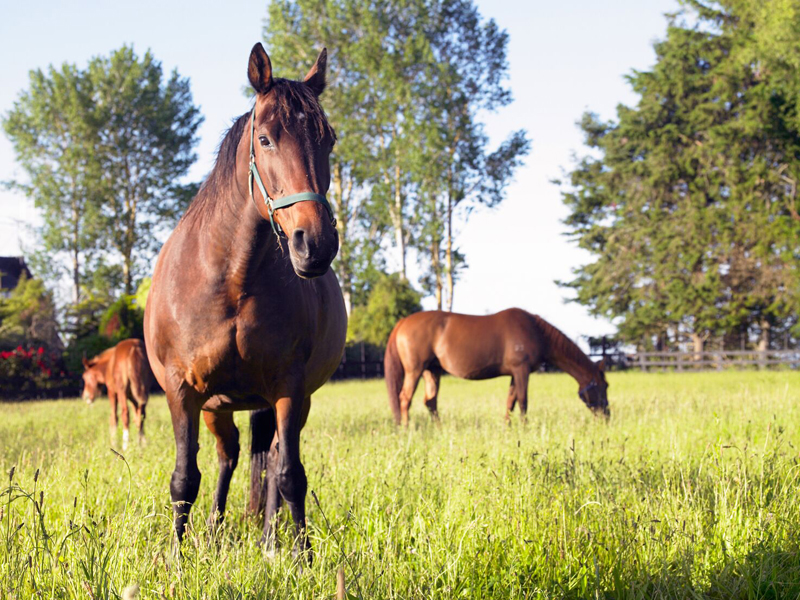New horse on the block
As a little boy, Leonard Fraser recalls his grandfather working their Nova Scotia farm with a team of Clydesdale horses
Saturday, 01 January, 2022

As a little boy, Leonard Fraser recalls his grandfather working their Nova Scotia farm with a team of Clydesdale horses. These memories and his family's Scottish roots, led him to choose Clydesdales as his breed of choice when he decided to become more actively involved with horses.
The Clydesdale horse breed traces its roots back to Clydesdale, Scotland and is named after the region. Clydesdales are known for their even temperament and signature blaze and "feathered" white socks on their legs.
Fraser and his wife, Donna, purchased their first Clydesdale in 2000.
"The characteristics of the breed, temperament, style, shape, grace, vigor, and action are just a few of the attributes of this magnificent horse," says Fraser. "Therefore it seemed to be a good fit for us!"
Since 2000, the Frasers have went on to expand the herd at Fraser's Country Farm to 4 head of Clydesdale geldings which they show in driving competitions across Canada in hitch classes like cart, team, unicorn, 4-horse, and 6-horse. The use the business name "4U Trailer Sales" in the show ring.
Fraser stables his horses in an insulated barn and provides each horse with its own box stall and turnout to grass. Because of showing, he houses and turns out horses individually to decrease risk of injury and mucks out stalls daily to keep animals clean.
Recently, the Frasers decided it was time to add another horse to their show herd. The new addition, a 17.3 hand 3-year-old Clydesdale gelding named Jack, is part of their strategy to improve and complement their existing draft horse hitch.
"We plan on using him as a wheel horse and also showing him in the single cart class," says Fraser.
As any horse owners would be, the Frasers were excited to bring Jack home and introduce him to the rest of the hitch. Before introducing him to the rest of the horses, they took steps to ensure a successful, healthy integration.
"Before purchasing we did a pre-purchase vet exam and made sure all vaccinations, deworming, and Coggins test were current," says Fraser.
It should be noted, even if the new herd addition passes all health exams, veterinarians recommend new horses be quarantined for at least 3 weeks, if possible. This gives adequate time for dormant viruses and other diseases to make themselves known and helps prevent outbreaks from occurring.
While Fraser does not turn his horses out together for show purposes, he recommends the following steps be taken when introducing a new horse to the herd:
- Stable horses next to each other.
- For the first turnout, use individual side-by-side runs or paddocks.
- If there appears to be no issue or fighting over the fence or in the barn, then you can turn horses into a small area together, preferably with no shoes on.
Turning stallions in with other horses, especially geldings, is not recommended, says Fraser. The only time this is appropriate is when pasture breeding mares.
Caution should be used when introducing a new horse to multiple horses or a large herd. A gradual approach as Fraser suggested is best. A few minor nicks and bruises can be expected. However, if a watchful eye and adequate room is provided to get out of the way of others, injuries will be minimal to non-existent. In due time, the new herd member will find their place in the pecking order.
By following the common sense steps Fraser discussed, adding a new horse the herd can be a easy and enjoyable experience for horse owners.
For more suggestions on ways to introduce a new horse to your herd, consult with your veterinarian or horse trainer.
Authored by Jesse Bussard a agricultural writer based in Bozeman, Montana.